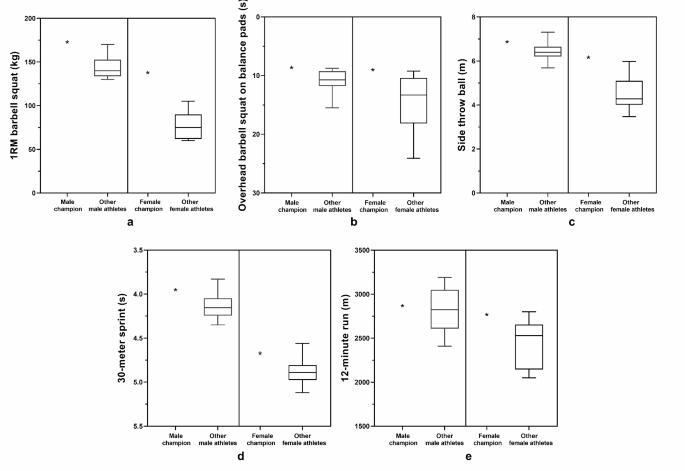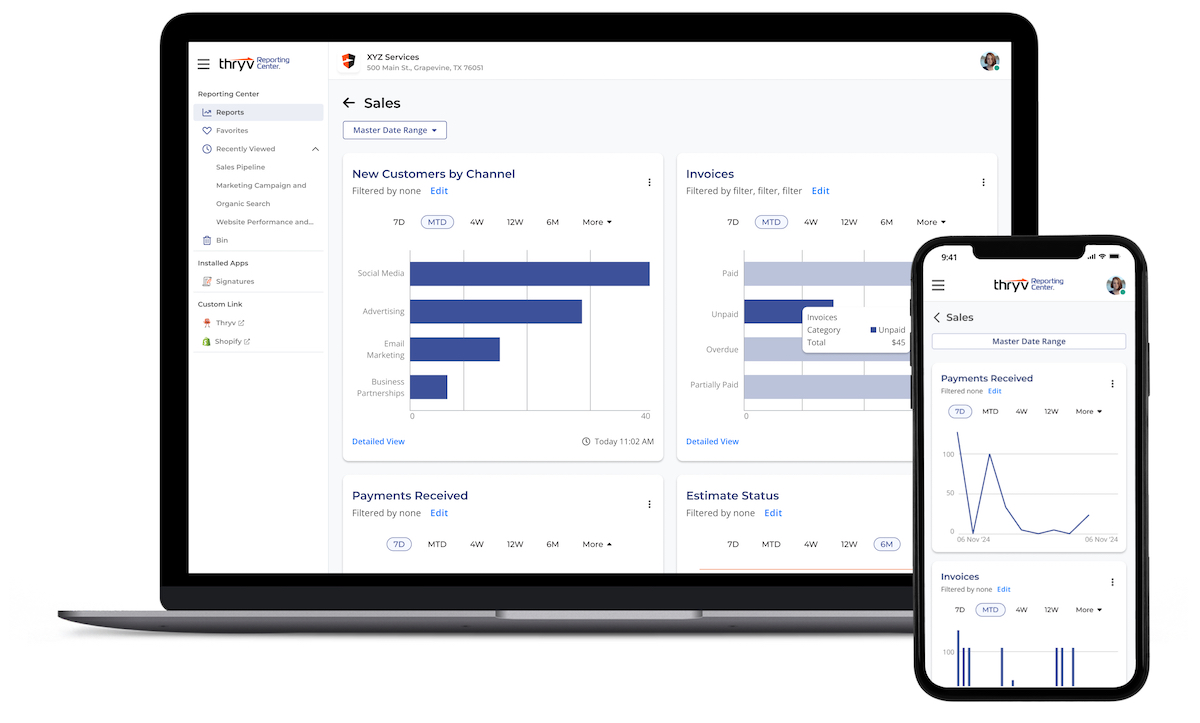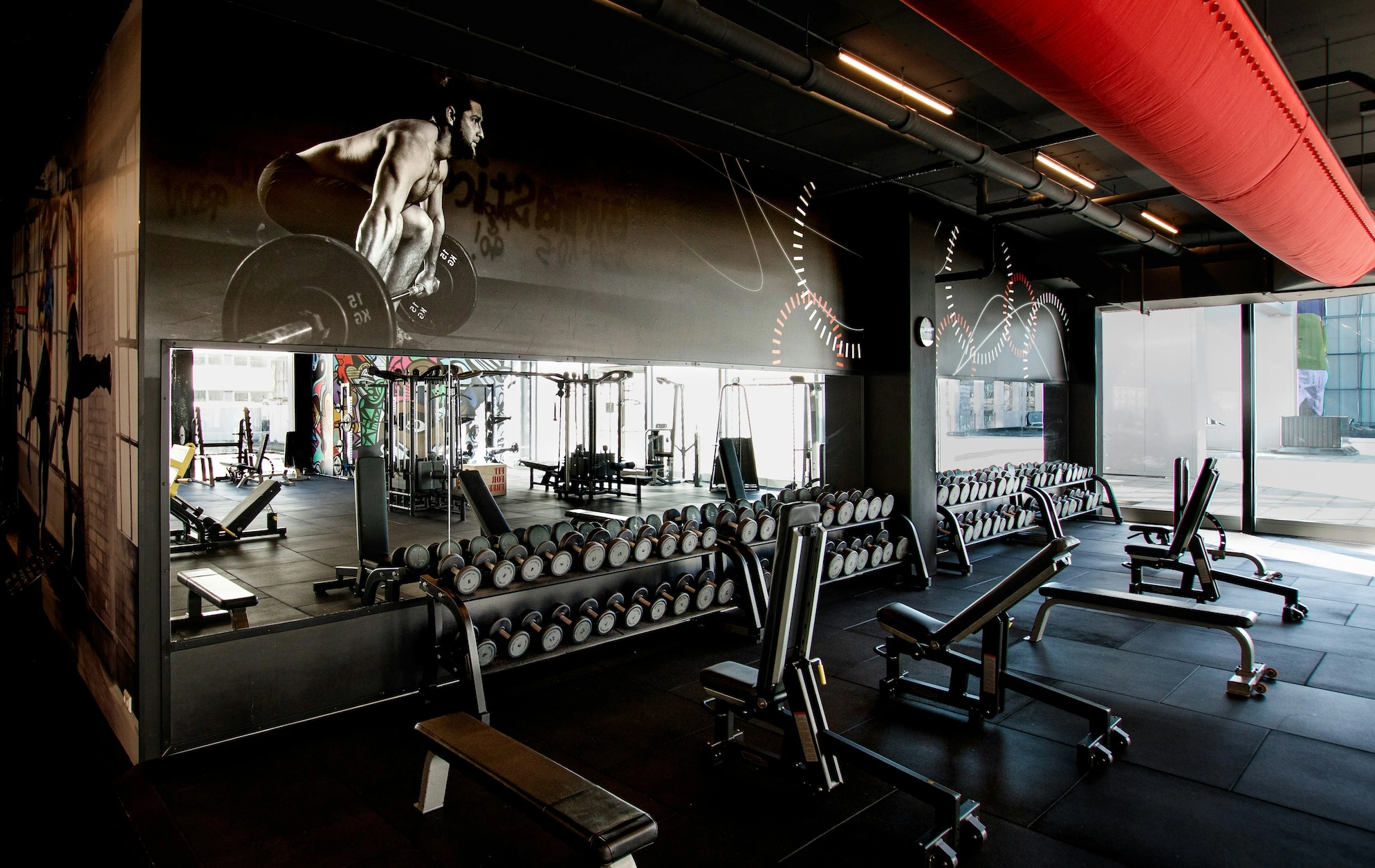Fitness
Research on the champion physical fitness model of freestyle skiing aerials athletes in preparation for the Beijing Winter olympics – Scientific Reports

The aim of this study is to enhance the competitive ability of freestyle skiing aerials athletes by establishing a champion physical fitness model and to provide a reference for training and monitoring for the 2026 Milan Winter Olympics. Through systematic analysis, a comprehensive physical fitness model has been successfully constructed, including an indicator model, a weight model, and a quantitative model. The application of these models provides an effective scientific basis for training and monitoring and helps to improve athletes’ performance. Specifically, the indicator model includes three body morphology indicators, three physiological function indicators, and five athletic quality indicators. The weight model assigns weights to these representative indicators, highlighting the importance of different indicators. The quantitative model conducts a detailed analysis from the perspective of champion physical fitness characteristics and performance prediction, providing quantitative data for the formulation of scientific training and competition strategies.
Analysis of the champion physical fitness indicator model
The performance of individuals during winter sports events is related to the makeup of their body composition20. Lean body mass, which is primarily composed of muscles, has a significant impact on athletic ability21,22,23. Freestyle skiing aerials require athletes to have considerable muscular strength, particularly in the lower limb muscles. Actions such as closing legs during aerial maneuvers, and eccentric squatting for buffering upon landing impose high demands on athletes’ leg strength6,24. Systematic strength training increases the proportion of lean body mass, thereby enhancing muscle strength and explosive power25. Evidence suggests that lean body mass is correlated with landing stability. A greater lean body mass in the lower limbs can increase energy absorption during landing26. Waist/height×100 is a significant indicator of core strength in athletes, reflecting the development level of abdominal and waist muscles12. Lower limb length/height×100 is primarily used for assessing the body proportions of aerials athletes. Athletes with elongated body proportions often excel in competitions due to the superior visual impact and rhythmic movement of their specialized technical maneuvers5. However, excessively long lower limbs may hinder the execution of technical maneuvers and balance5. A harmonious and proportionate ratio of lower limb length to height is advantageous for enhancing competitive performance.
The relative maximum anaerobic power, a key indicator of an athlete’s anaerobic metabolism level, is measured by the maximum watt output per kilogram of body weight. This measurement quantitatively represents an athlete’s ability to exert maximum force instantly under anaerobic conditions. For aerials athletes, excellent anaerobic power enables them to perform technical maneuvers rapidly and accurately at critical moments, enhancing the execution of aerial skills and the safety of landings, while also reducing the risk of injuries due to insufficient strength15. Relative maximum oxygen uptake evaluates cardiorespiratory function. In competitive sports with strict weight control, its value affects athlete performance. During freestyle skiing aerials training or competitions, athletes need to attempt and complete technical maneuvers multiple times27. Good cardiorespiratory function aids in fatigue recovery, providing ample energy for training or competition15. Blood urea reflects the metabolic state of muscle breakdown and synthesis, indicating an athlete’s nutritional status and training load. High-intensity training increases blood urea concentration, signifying increased muscle breakdown. Conversely, during recovery periods or low-intensity training, blood urea levels decrease, indicating muscle repair. This indicator provides coaches with valuable information for adjusting training plans, enhancing athlete recovery, and taking necessary nutritional supplementation measures28.
The 1RM barbell squat is a key indicator for assessing the maximum strength of the lower limbs. It primarily assesses the strength of the athlete’s gluteal and thigh muscles, as well as testing the stability of their trunk. Evidence suggests that improving athletes’ squat strength positively impacts their athletic performance29,30and injury prevention31,32. The inclusion of this indicator emphasizes the need for athletes to focus on developing maximum leg strength in their daily training. During the landing phase, athletes need to cushion the impact force through active flexion and extension movements of the lower limb joints (especially the hip and knee joints), followed by rapid extension to return to the standing position, a process that places high demands on extensor muscle strength33. Overhead barbell squat on balance pads and side throw balls are highly aligned with the demands on the core area during the aerials and landing phases of freestyle skiing aerials. Overhead barbell squat on balance pads assesses an athlete’s balance and stability control during rapid squatting in an unstable state. The side throw ball measures the explosive force of trunk rotation without lower limb support and the balance between the left and right sides of the trunk. A strong core muscle group is essential for athletes performing aerial maneuvers and ensuring stable landings, providing the necessary body control and balance to enhance the accuracy and success rate of their movements34. The 30-meter sprint primarily relies on the phosphagen energy system, which supports high-intensity and short-duration bursts of activity. In freestyle skiing aerials, the critical phases are the aerial maneuvers and landing35, typically requiring 2–3 s of rapid force exertion, aligning with the energy demands of a 30-meter sprint. During this brief technical execution period, athletes must demonstrate quick reactions and swift movement speeds to ensure precise and smooth execution of their maneuvers5. The 12-minute run test evaluates athletes’ aerobic metabolic capacity. During breaks in competitions or training, good aerobic metabolism can enhance the recovery rate of ATP and CP, preparing athletes for the next phase of high-intensity performance36,37,38. Therefore, athletes should emphasize aerobic metabolism training. Additionally, freestyle skiing aerials is a snow sport with a high injury rate11. Aerobic metabolic training is an important method for injury recovery (post-surgery rehabilitation) and can help athletes return to competition more quickly39,40,41.
Analysis of the champion physical fitness weight model
Determining weights is essential for refining the champion physical fitness model. This study determined the weights for primary indicators and secondary and tertiary indicators through questionnaires and factor analysis. The weights assigned to each indicator highlight their relevance to the physical fitness components crucial for freestyle skiing aerials.
Among the primary indicator weights, athletic quality had the highest weight (0.45), followed by physiological function and body morphology. Therefore, athletic quality constitutes a critical component of physical conditioning in freestyle skiing aerials. Among the athletic quality indicators, 1RM barbell squat, overhead barbell squat on balance pads, and side throw balls had the highest weights, in the order of 0.31, 0.20, and 0.19, respectively; all of these are strength-type indicators. These findings indicate that physical fitness training for aerials athletes should primarily focus on strength. Among the physiological function indicators, the relative maximum anaerobic power had the highest weight (0.43), indicating a high demand for anaerobic metabolism capacity in these athletes. The next highest was the relative maximum oxygen uptake, suggesting the importance of cardiopulmonary function enhancement in regular training. Body morphology indicators were as follows: lean body mass (0.37) > waist/height×100 (0.35) > lower limb length/height×100 (0.28), emphasizing the importance of muscle mass development and core muscle strengthening in athletes. Lower limb length/height×100 is predominantly determined by genetic factors, with limited potential for improvement through training. This underlines the importance of prioritizing individuals with innate athletic physiques in the process of talent identification.
Analysis of the champion physical fitness quantitative model
The physical fitness differences among freestyle skiing aerials athletes significantly impact competitive results35. Compared to other athletes, champions have demonstrated superior traits in multiple physical fitness indicators, which are critical factors contributing to their competitive success (Figs. 2, 3 and 4).
Box plot comparisons of body morphology revealed that both male and female participants exceeded the upper quartile for lean body mass and waist/height×100, indicating relatively better muscle mass and stronger core strength. The lower limb length/height×100 value for the male champion exceeded the median value of other athletes, while for the female champion, it surpassed the upper quartile, indicating a relatively elongated physique. Physiologically, the male champion’s relative maximal anaerobic power exceeded the upper quartile, while the female champion’s value approached the maximum, highlighting the importance of anaerobic capacity in this event. The relative maximum oxygen uptake of the male champion was slightly less than the median, while that of the female champion was greater than the upper quartile. This finding indicates that the cardiopulmonary function of the male champion is at an average level, while that of the female champion is at a higher level. Blood urea levels were within the normal range in all the athletes (male, normal range: 1.7–8.3 mmol/L; female, normal range: 1.7–8.3 mmol/L). In terms of athletic quality, the study found that the champion athletes’1RM barbell squat and overhead barbell squat on balance pads were among the top in the entire team. Particularly in the 1RM barbell squat, the performance of these individuals was significantly superior to that of other athletes, surpassing the maximum value of the box plot, which highlights their advantage in maximal leg strength. In the overhead barbell squat on balance pads test, the scores of both male and female champion were close to the maximum, reflecting their exceptional lower limb balance and core stability. Their performance in the side throw ball test and 30-meter sprint also surpassed the upper quartile, showcasing excellent trunk rotation and speed agility. In the 12-minute run, the result of the male champion was above the median, while that of the female champion exceeded the upper quartile. This result is similar to that of the relative maximum oxygen uptake, which reflects cardiopulmonary function. Given that the two Olympic champions at the 2022 Beijing Winter Olympics were elite athletes older than 30 years and that their physical fitness traits were well established through years of standardized periodized training, the physical fitness characteristics model established in this study holds high reference value.
This study identified key variables related to the performance of freestyle skiing aerials, including training experience, relative maximum anaerobic power, 1RM barbell squat, and overhead barbell squat on balance pads. Stepwise regression analysis revealed that these variables could explain 78.9% of the variance in athletes’ performance. According to relevant studies4,15,42, training experience is a critical factor for the performance of aerials athletes, as only those with extensive training experience can tackle high-difficulty technical maneuvers. Therefore, this study combined training experience and physical fitness factors to analyze athletes’ performance. The results indicated that training experience has a significant predictive effect. Compared to athletes with less training experience, those with extensive experience not only can perform more challenging technical maneuvers but also can quickly adjust their posture during competitions. This ability relies on advanced spatiotemporal perception. Experienced athletes excel in perceiving external stimuli, extracting information from the environment, and making quick decisions. These skills help them adapt to complex environmental conditions and facilitate the integration of multisensory information, forming optimized response patterns2. The three physical fitness factors in the regression model (relative maximum anaerobic power, 1RM barbell squat, and overhead barbell squat on balance pads) reflect the importance of anaerobic capacity, lower limb strength, core stability and body balance control in aerials performance. The performance prediction model can provide coaches and athletes with more forward-looking training guidance and competitive strategy suggestions.












